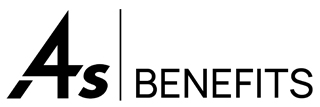Before Setting Up A Retirement Plan
1. What type of plan best suits you?
Types of plans, as outlined by the U.S. Department of Labor, include:
- A Traditional 401(k) Plan — this plan design will offer the maximum flexibility of the three plans. Employers can make a match and profit sharing to employees if they choose. These contributions can be subject to a vesting schedule.
- Safe Harbor Design — this plan design gives you a free pass from the IRS required tests that can sometimes limit a Highly Compensated Employees or owners from maximizing their contribution in a Plan Year. The Employer would commit to a Safe Harbor Match or Safe Harbor Profit Sharing. There are fewer tax rules with this plan.
- Simple 401(k) Plan — the Savings Incentive Match Plan for Employees of Small Employers was created so small businesses could have an effective cost-efficient way to offer employee retirement benefits. This is available to employers with less than 100 employees. The contribution limits are less on this type of plan. The Employer would commit to a Simple Match or Simple Profit Sharing.
2. To whom do you want to offer the plan?
Do you want part-time employees in the plan (you can add an hour requirement to delay their entry)? Will you have an age requirement?
3. When will employees join the plan?
Short service requirements (less than three months of service) are now common for participant contributions. You can impose a longer period for the Match or Profit Sharing portion of the Plan, but this could deter participants from joining which affects your ADP test (Actual Deferral Percentage test required by the IRS).
4. Will you implement a Match or Profit Sharing feature?
There are so many variations you could do with Match and Profit Sharing — or you could write the plan as "discretionary" and decide year by year what you want to do. 4A's Benefits will prepare calculations for you to determine the costs. What kind of vesting will you impose on the Employer contributions (example — each year you work for the Company, you earn 20% vesting on the Employer contribution; therefore by your 5th anniversary, you are 100% vested).
5. Will you allow for loans?
IRS allows participants to borrow a percentage of their vested account balance. The Employer decides what kind of loan program to offer and what limitations they would like to put on it.

